Diabetes is one of the most significant public health challenges. In the UK, 4.7 million people have diabetes. Type 2 diabetes accounts for 90% of cases and is characterised by the progressive decline in β-cell function and increase in insulin resistance. The prevalence of type 2 diabetes in younger populations is growing. It is estimated that by 2025, the number of people living in the UK with diabetes will reach five million (Diabetes UK, 2019).
Complications of diabetes
The main complications of diabetes are microvascular disease affecting the eyes, nerves and kidneys, and macrovascular disease leading to cardiovascular disease (CVD), cerebrovascular disease and lower extremity artery disease (Fowler, 2008).
Poor glucose control is associated with increased risk of complication. Every week diabetes leads to more than 169 amputations, 680 strokes, 530 heart attacks and almost 2 000 cases of heart failure. More than 500 people with diabetes die prematurely every week. Diabetes can also have significant psychological impact leading to diabetes distress, anxiety and depression (Diabetes UK, 2019).
The primary cause of morbidity and mortality in patients with type 2 diabetes is cardiovascular disease. Compared to people without diabetes, people with type 2 diabetes are nearly 2.5 times more likely to have a heart attack or experience heart failure, and 2 times as likely to have a stroke. On average, one-quarter of people who end up in hospital due to stroke, heart attack or heart failure have diabetes (Diabetes UK, 2019).
The COVID-19 pandemic has highlighted that people with type 2 diabetes are at twice the risk of dying in hospital with COVID-19 compared to the general population (Barron et al, 2020).
The cost of complications
It is estimated that diabetes costs the NHS at least £10 billion each year, which is equivalent to 10% of the entire NHS budget (Diabetes UK, 2019). Almost 80% of this cost is spent on treating the complications of diabetes (Hex et al, 2012). Prescribing medications for the complications of diabetes is around three to four time the cost of prescribing medications for the treatment of diabetes. Medication for cardiovascular disease constitutes the largest proportion of prescriptions costs for people with diabetes (Medical Technology Research Group, 2012)
Early glycaemic control leads to better outcomes
Since the landmark The UK Prospective Diabetes Study (UKPDS) study, it has been well recognised that early glycaemic control leads to better long-term outcomes for those living with type 2 diabetes.
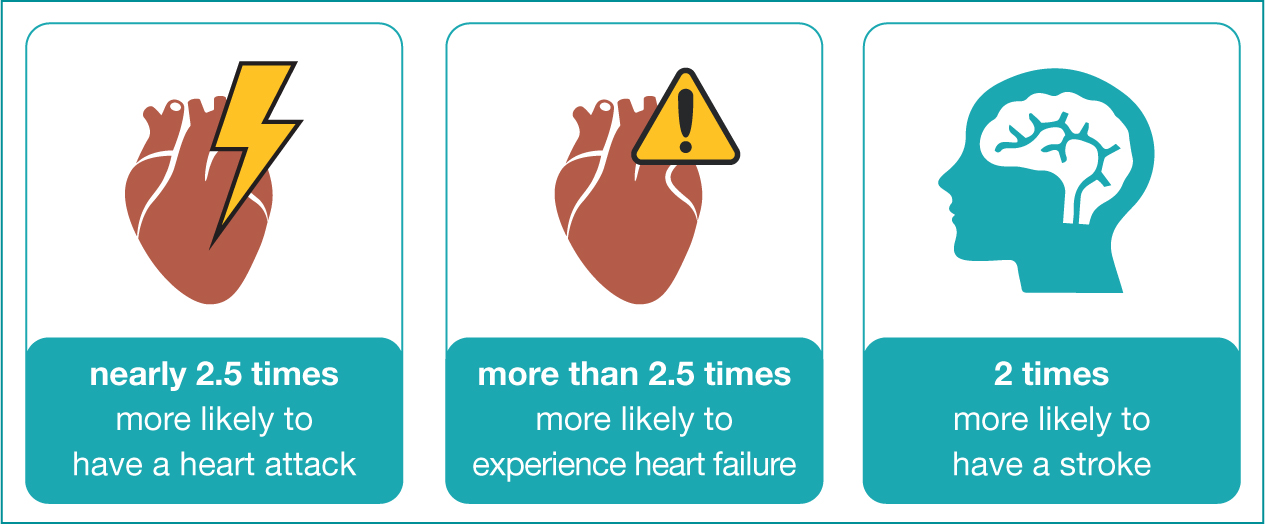 Figure 1. Comparisons to those without Type 2 Diabetes abridged
Figure 1. Comparisons to those without Type 2 Diabetes abridged 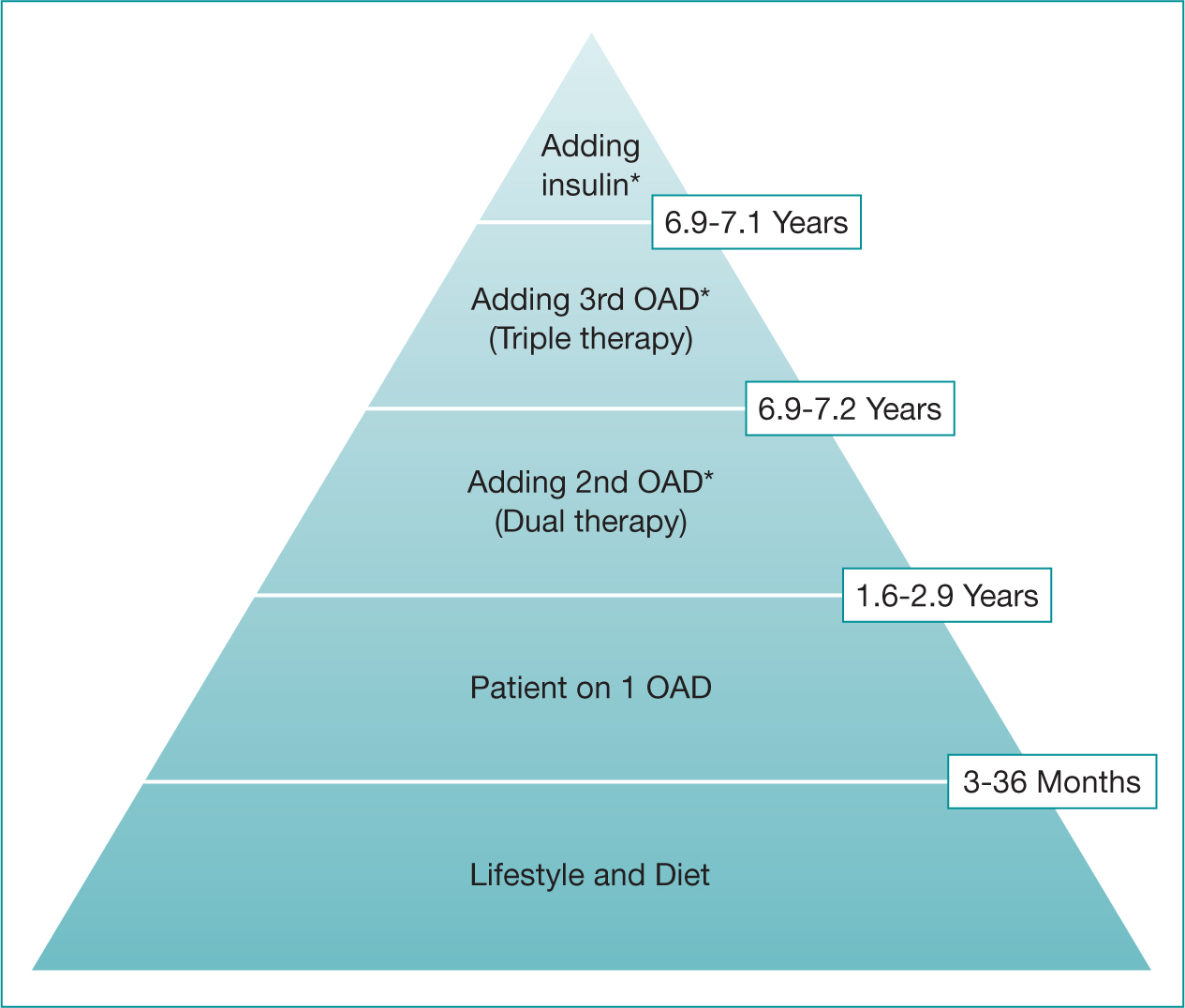 Figure 2. Adopted from Khunti et al (2013) showing the time it takes to intensify blood glucose-lowering therapies in Type 2 diabetes
Figure 2. Adopted from Khunti et al (2013) showing the time it takes to intensify blood glucose-lowering therapies in Type 2 diabetes
Each 1% reduction in HbA1c was associated with 37% decrease in microvascular and a 14% decrease in myocardial infarction risk (Stratton et al, 2000). Despite the availability of new diabetes therapies and treatment guidelines, 48% of adults across England are still not achieving a treatment target of HbA1c <53 mmol/mol (NHS Digital, 2019).
Therapeutic Inertia
Type 2 diabetes has been traditionally managed through a stepwise approach to achieve a specific HbA1c target (Del Prato et al, 2005). In the majority of cases, this approach does not lead to sustained glycaemic control. As type 2 diabetes is a progressive disease, most patients will ultimately require intensification of treatment to maintain adequate glycaemic control (Campbell, 2000).
Khunti and Davies (2017) suggest that therapeutic inertia, which is the ‘failure to advance therapy or to de-intensify therapy when appropriate to do so’, may contribute to patients living with suboptimal glycaemic control over many years. It is estimated that the median time it takes to intensify therapy from one oral blood glucose lowering therapy to two therapies is 1.6-2.9 years, and 6.9-7.2 years to intensify from two oral blood glucose lowering therapies to three when HbA1c is ≥58 mmol/mol (7.5%)
Treatment Guidelines
In 2015, the National Institute for Health and Care Excellence (NICE) published a guideline on the management of type 2 diabetes in adults (NG28). This guideline took a more pragmatic approach to person centred care but was felt by some to be a missed opportunity for clarity. (Meetoo and Alsomali, 2016). Like many guidelines, NG28 recommends lifestyle and dietary advice, followed by stepwise intensification starting with metformin, unless contraindicated and then an array of oral and injectable therapies. This has led to confusion amongst some clinicians unsure of what to add in next leading to delays in appropriate escalation of therapy (Khunti et al, 2013).
Although the NICE NG28 (NICE, 2020) and the Scottish Intercollegiate Guidelines Network (SIGN, 2017) guidelines do include the newer therapies, these guidelines have become outdated as they do not reflect the cardiovascular benefits seen in cardiovascular outcome trials.
In 2018, the American Diabetes Association (ADA) and the European Association for the study of Diabetes (EASD) published a consensus statement taking into account current evidence from cardiovascular outcomes trials placing sodium – glucose cotransporter 2 inhibitor (SGLT2i) and glucagon-like peptide-1 receptor agonists (GLP-1 RA) as the second-line agents in those with established atherosclerotic cardiovascular disease (ASCVD) and/or chronic kidney disease (CKD) and type 2 diabetes.
Changing approach
In recent years, type 2 diabetes has become increasingly recognised as a cardio-renal metabolic syndrome interwoven with hypertension, hyperlipidaemia, chronic kidney disease and heart failure (Arnold et al, 2018).
Management of type 2 diabetes is not just about managing blood glucose, but should focus on managing blood pressure, dyslipidaemia, weight loss, smoking and psychological factors, in addition to screening and managing nephropathy, retinopathy, foot health and cardiovascular disease risk factors (Seidu and Khunti, 2020).
The alphabet strategy (Lee, 2015) (Figure 3) provides a useful mnemonic for effective diabetes care, which includes advice on diet and lifestyle, blood pressure, cholesterol, diabetes control, eye examination, foot check and guardian drugs which may include aspirin for secondary prevention of CVD and angiotensin-converting enzyme (ACE) inhibitors/Angiotensin II Receptor Blockers (ARBs) for renal protection where appropriate.
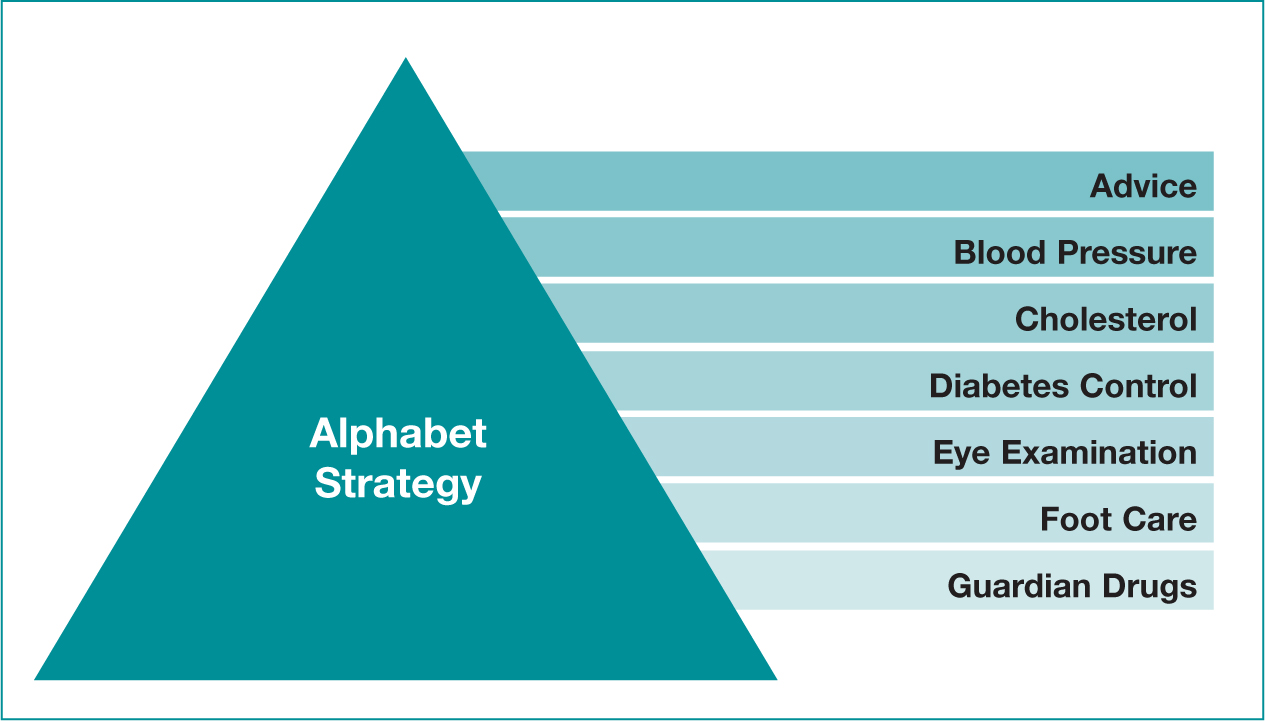 Figure 3. Alphabet Strategy for diabetes care
Figure 3. Alphabet Strategy for diabetes care
The goals of therapy must be person-centred, to prevent complications and optimise quality of life.
Treatment guidelines
In 2019, ADA and EASD further updated their 2018 recommendations on the management of hyperglycaemia in type 2 diabetes recommending GLP-1 RA's and/or SGLT2-Is in those with type 2 diabetes and at high risk of cardiovascular disease in order to reduce the risk of major adverse cardiovascular events (MACE), hypertensive heart failure (hHF), CV death or CKD progression.
The 2019 update to Management of hyperglycaemia in type 2 diabetes, 2018. A consensus report by the ADA and EASD can be found in Buse et al (2019). Many consider the recommendations made by the ADA/EASD to be the gold standard in the management of type 2 diabetes (Davies et al, 2018).
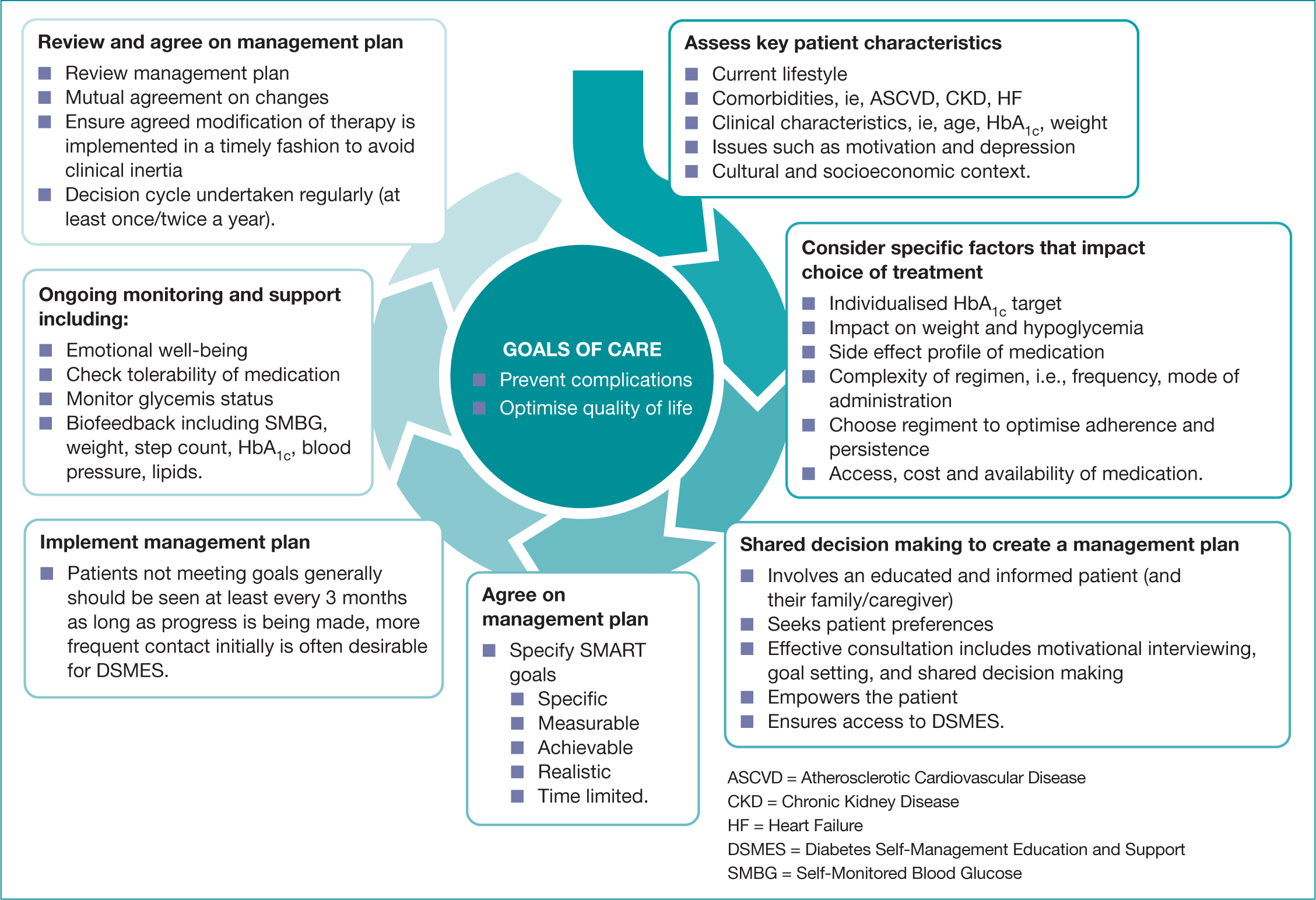 Figure 4. Standards of Medical Care in Diabetes
Figure 4. Standards of Medical Care in Diabetes
Several CCGs have recently sought to update their guidelines taking into account the evidence from cardiovascular outcome trials moving from a gluco-centic to a more cardio-metabolic approach whilst encouraging cost-effectiveness through regular medication review and discontinuation of ineffective therapies. The Sussex NHS Commissioners (2021) interim type 2 diabetes guideline has recently been updated and can be found in the references.
Despite the positive cardiovascular trials and updated guidelines placing SGLT2i and GLP-1 RA as preferred second-line agents in those with ASCVD or CKD, dipeptidyl peptidase-4 (DPP-4) inhibitors ‘gliptins’ are still commonly prescribed as second-line agents (Hanif, 2020). Cardiovascular outcome trials (CVOTs) have shown DPP-4 inhibitors to overall cardiovascular neutral, except saxagliptin which displayed increased risk of hospitalisation for heart failure (Scirica et al, 2015).
DPP-4 inhibitors are a well-established class of medication which are generally well tolerated by most patients The DPP-4 inhibitor, linagliptin has been particularly useful during the COVID-19 pandemic where it has been necessary to start therapies remotely. Owing to simplicity of dosing and no requirement for additional drug related renal monitoring, it can be used prescribed safely in most patients including those with renal impairment and frailty (Hanif, 2020).
DPP-4 inhibitors continue to be an important treatment option for particular patients such as those who are elderly with frailty and/or complex comorbidities who do not require such stringent HbA1c control; however, it is important to note that this class of medications are cardiovascular neutral meaning that they do not offer any additional cardiovascular benefit. Table 1 summarises the cardiovascular benefit of the different classes of blood glucose-lowering therapies in addition to offering some prescribing tips in how to choose between them.
Table 1. Classes of blood glucose-lowering therapies for the treatment type 2 diabetes to include common side effects and prescribing tips to aid choosing between agents
| Class and drug | Efficacy (likely reduction in HbA1c) | CV benefit | Hypo risk | Weight | Main Side effects | Prescribing tips |
|---|---|---|---|---|---|---|
| Metformin | High (up to 2%) | Yes | Low | Reduction | GI symptoms |
|
| Acarbose | Low/Moderate (up to 1%) | Unclear | Low | Reduction | GI symptoms |
|
| Sulfonylureas | High (up to 2%) | No | High | Gain | Hypoglycaemia |
|
| Repaglinide | High (up to 2%) | No | High | Gain | Hypoglycaemia |
|
| SGLT-2i | Moderate (up to 1%) but depends on eGFR for glycaemic lowering effects | Yes (specific agentsA). | Low | Loss | Genitourinary tract infections, dehydration, and hypotension from increased urination |
|
| DPP-4i (gliptins) | Low/Moderate (up to 1%) | No | Low | Neutral | Few |
|
| Pioglitazone | High (up to 1.5%) | Probable (but fluid retention) | Low | Gain | Oedema, Fractures |
|
| GLP-1 RA | High (up to 1.5%) | Yes (specific agentsB) | Low | Loss | GI symptoms Increased risk of acute pancreatitis increased risk of diabetic retinopathy was observed with semaglutide |
|
| Basal insulin | High (in theory no limit) | No | Highest | Gain | Hypoglycaemia |
|
GI=gastrointestinal; GLP-1RA=glucagon-like peptide-1 receptor agonist; SGLT2i=sodium-glucose co-transporter-2 inhibitor; DPP-4i=dipeptidyl peptidase-4 inhibitor; HF=heart failure; CKD=chronic kidney disease; eGFR=estimated glomerular flltration rate; CVOTs= Cardiovascular outcome trials
ASGLT2i with proven CVD benefits at the time of writing: Empagliflozin, canagliflozin and dapagliflozin have shown reduction in HF and to reduce CKD progression in CVOTs. Canagliflozin has primary renal outcome data from CREDENCE, Dapagliflozin has primary heart failure outcome data from DAPA-HF.
BGLP-1 RAs with proven CVD benefits at the time of writing: Liraglutide (LEADER), subcutaneous semaglutide (SUSTAIN-6) and Dulaglutide (REWIND).
Risk stratification tool
The position statement published by the Primary Care Diabetes Europe (Seidu et al, 2020) aims to provide a simple and pragmatic tool for primary care to help determine the cardiovascular risk in people with diabetes.
The PCDE guidance (2020) assumes that people with diabetes are either at very high risk or high risk. Patients with type 2 diabetes are considered to be at very high risk if they have:
- History of established CVD
- Multiple uncontrolled cardiovascular risk factors such hypertension, hyperlipidaemia, obesity and/or smoking
- eGFR <60ml/min/1.73 m2
- Albuminuria
- Early onset of type 2 diabetes <40 years.
Treatment recommendations
A person-centred approach must be adopted based upon individual patient characteristics and treatment goals. An individualised HbA1c target should be agreed with the person taking into account their ideas, concerns and expectations about their diabetes care encouraging shared decision making and ownership (American Diabetes Association, 2019).
ASCVD predominates
In patients with established atherosclerotic cardiovascular disease (ASCVD) or with indicators of high ASCVD risk (age ≥55 years + left ventricular hypertrophy or coronary carotid or lower extremity artery stenosis >50%), the ADA/EASD consensus recommends early consideration preferably a GLP-1 RA with proven CVD benefit or a SGLT2-i with proven CVD benefit if eGFR adequate, rather than the traditional stepwise process (Buse et al, 2020).
HF or CKD predominates
In patients where heart failure (HF) or Chronic Kidney Disease (CKD) predominates, particularly heart failure with reduced ejection fraction (HFrEF) or CKD specifically eGFR 30-60 mls/min or with albuminuria, the ADA/EASD consensus recommends early consideration of preferably a SGLT2-i with evidence of reducing HF and/or CKD progression if eGFR adequate rather than the stepwise process. If an SGLT2-I is not tolerated or contraindicated or if eGFR less adequate, they recommend adding a GLP-1 RA with proven CVD benefit (Buse et al, 2020).
These recommendations are shown visually in Figure 5.
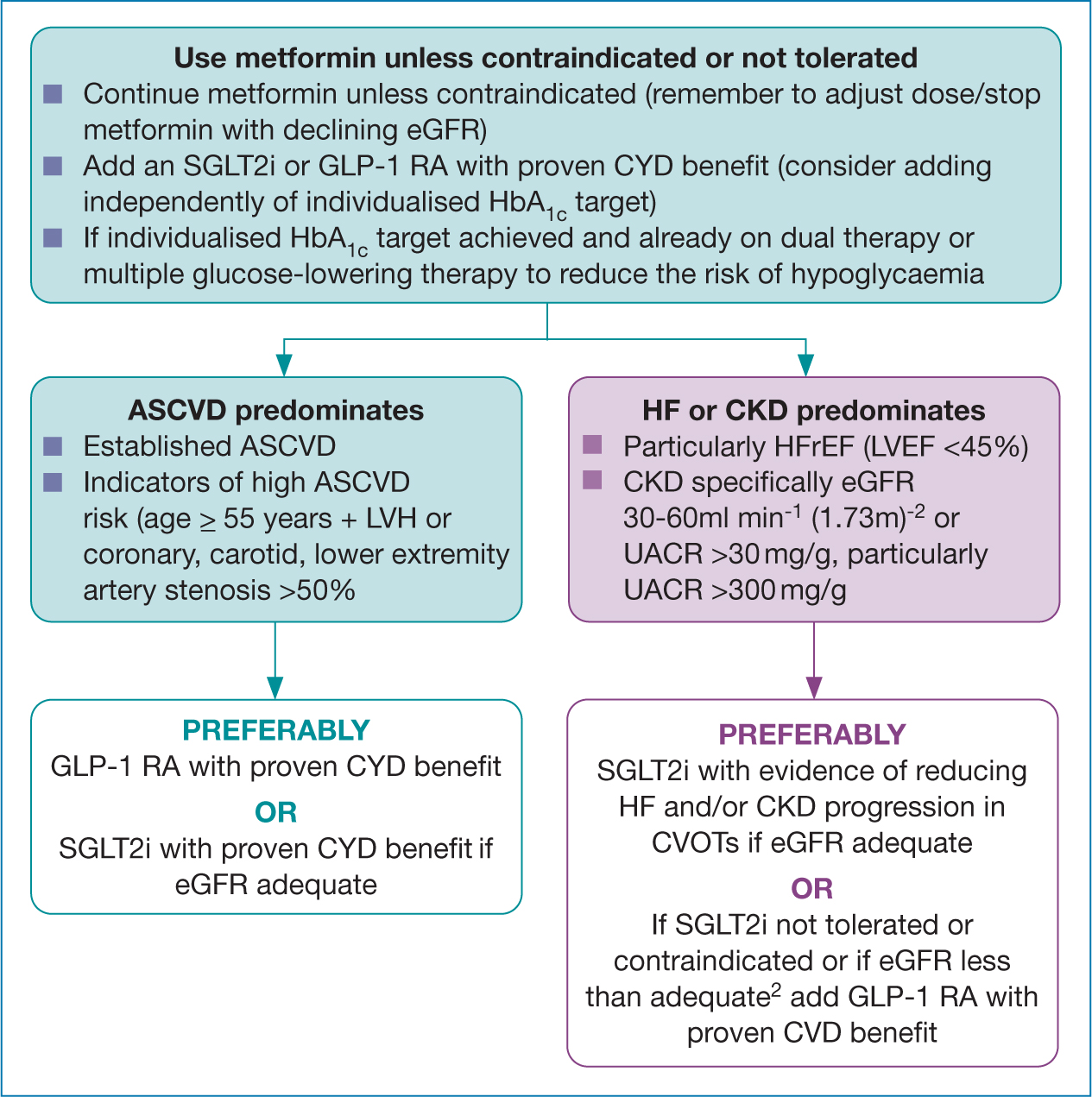 Figure 5. Glucose lowering medication recommendations in those with indicators of high risk or ASCVD, CKD or HF
Figure 5. Glucose lowering medication recommendations in those with indicators of high risk or ASCVD, CKD or HF
Prioritisation as we move to COVID-19 pandemic recovery
The COVID-19 pandemic has had significant implications on diabetes services to include the suspension of routine care appointments and redeployment of healthcare staff (The Health Foundation, 2020).
The challenge now is the significant backlog of patients requiring routinely diabetes care. Many services are already starting to see significantly raised HbA1c readings owing to lockdown, in addition to late presentations of diabetes complications owing to fears of exposure to COVID-19 or difficultly accessing clinical services (Brown and Diggle, 2020; Hambling et al, 2021).
The Association of British Clinical diabetologists (ABCD) together with Diabetes UK and the Primary Care Diabetes Society (PCDS) have developed a model to help primary care identify patients at the greatest risk and prioritise their care (Figure 6). Here they suggest running searches based upon the last recorded HbA1c and additional risk factors to risk stratify people as red, amber or green. For those categorised as red, urgent review is recommended within 3 months. For those patients categorised as amber, priority review is recommended within 6 months and for those categorised as green, routine review is recommended within 12 months.
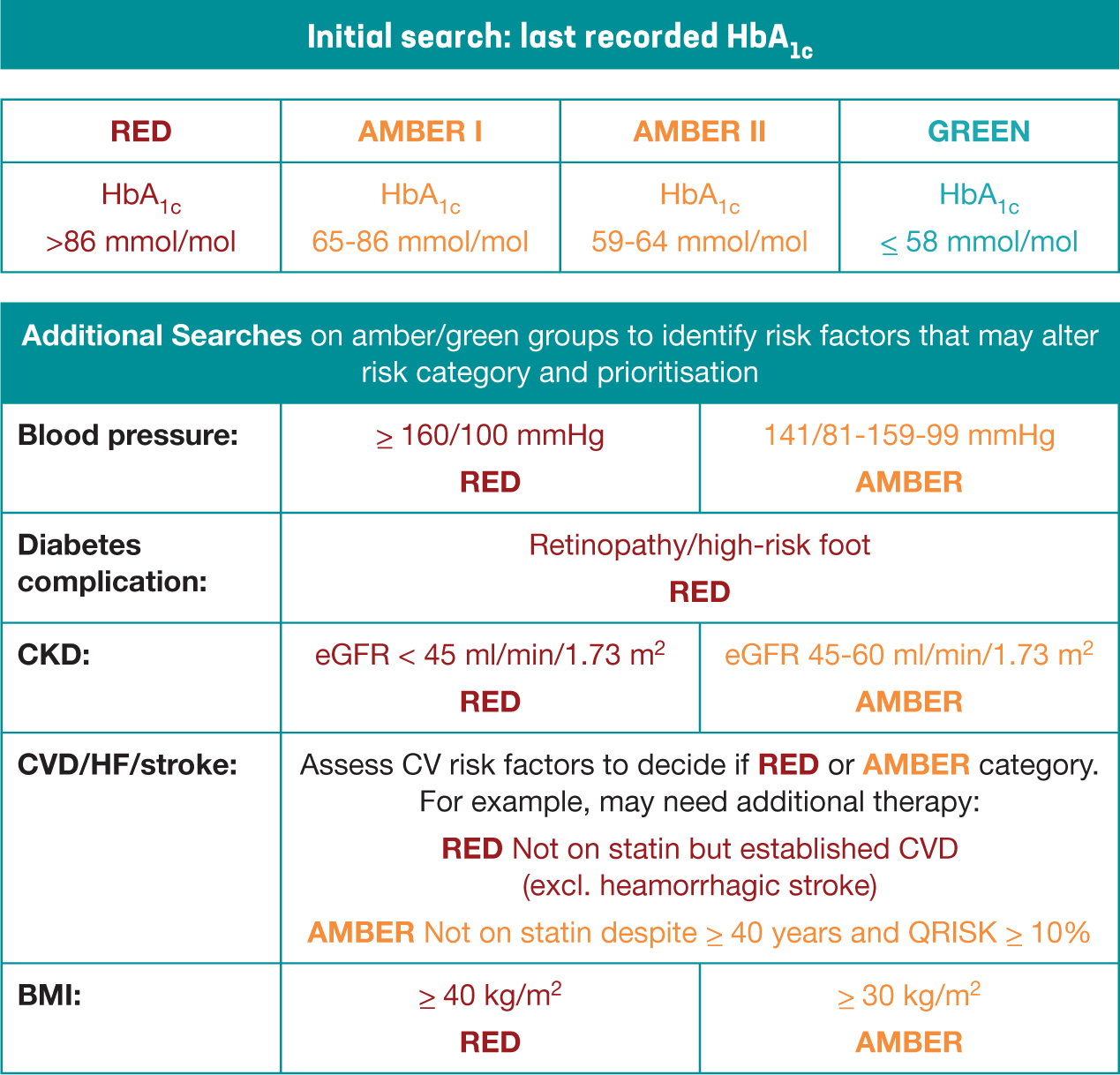 Figure 6. Tool to help primary care identify patients and prioritise patients for diabetes review
Figure 6. Tool to help primary care identify patients and prioritise patients for diabetes review
Conclusion
Type 2 diabetes is a cardio-renal metabolic syndrome interwoven with hypertension, hyperlipidaemia, chronic kidney disease and heart failure. CVD is the primary cause of mortality in patients with type 2 diabetes.
Management of type 2 diabetes requires more than just focusing on blood glucose control. Early intensification, reducing therapeutic inertia and patient prioritisation is required as we move into COVID-19 pandemic recovery in order to minimise the risk of CVD and other complications.
We must become more proactive at screening and managing the complications of diabetes to include cardiovascular disease, nephropathy, retinopathy and foot ulcers earlier on.


